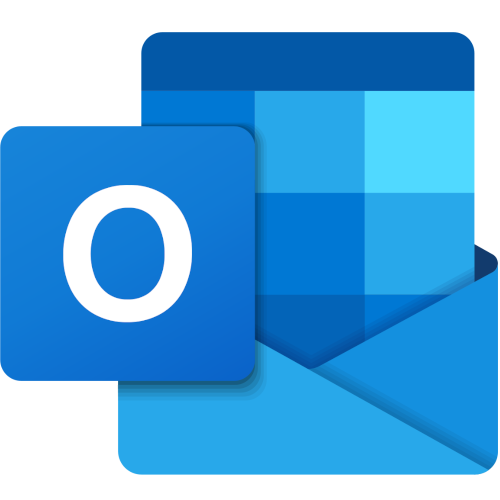Remote Learning Provision
Remote education provision Upton-by-Chester High School: information for parents/carers
This information is intended to provide clarity and transparency to learners and parents or carers about what to expect from remote education if local restrictions require entire cohorts (or bubbles) to remain at home.
For details of what to expect where individual learners are self-isolating, please see the final section of this page.
The remote curriculum: what is taught to learners at home
A learner’s first day or two of being educated remotely might look different from our standard approach, while we take all necessary actions to prepare for a longer period of remote teaching.
What should my child expect from immediate remote education in the first day or two of learners being sent home?
Teachers will upload the lesson resources and tasks to Google Classroom for absent learners to access.
Some teachers may facilitate live Google Meet lessons, details will be posted in the relevant Google Classroom for that subject, where this is possible.
Learners may be directed to access online digital platforms e.g. The Oaks Academy lessons.
Following the first few days of remote education, will my child be taught broadly
the same curriculum as they would if they were in school?
At Upton we teach the same curriculum remotely as we do in school, wherever possible and appropriate. However, we have needed to make some adaptations in some subjects. For example, in PHSE some subjects are more suitable to be taught in the classroom with the teacher facilitating the discussion face-to face. In
practical subjects the schemes of work and/or lesson activities may have been reorganised to accommodate remote learning. For Core Physical Education learners will be provided with a choice of activities that they can participate in.
Remote teaching and study time each day
How long can I expect work set by the school to take my child each day?
We expect that remote education (including remote teaching and independent work) will take learners broadly the following amount of time each day
| Secondary school-aged learners Year 7, 8 and 9. |
Learners will be expected to follow their normal school timetable from 8.40am to 3.10pm. Break-time and lunchtime should be taken in-line with a normal school day. Live lessons and work will be accessed through the relevant subjects’ Google Classroom. The work set each lesson is expected to be completed within the lesson time. This is to prevent learners having a backlog of work. |
| Secondary school-aged learners Year 10,11,12,13 |
Learners will be expected to follow their normal school timetable from 8.40am to 3.10pm. Break-time and lunchtime should be taken in-line with a normal school day. Live lessons and work will be accessed through the relevant subjects’ Google Classroom. Most work, set each lesson, is expected to be completed within the lesson time. This is to prevent learners having a large backlog of work. However, learners may also have additional work to complete for formal qualifications. E.g. Coursework or revision for assessments. This extra work should be completed in addition to the normal working school day. 6th Form Learners should also use the study periods on their timetable to consolidate their knowledge and understanding. |
Accessing remote education
How will my child access any online remote education you are providing?
We use Google Classrooms to post all details of work. Google Meet is used to host live and recorded lessons. If a lesson is live, a link and instructions will be posted into the classroom for that subject. Learners should follow their normal school timetable and click into the relevant Google Classroom at the start time of the lesson. Here
they will find the instructions for the lesson.
Teachers also use a range of other digital platforms to set work and assess learners. Please find a list of some of the platforms below. All details of work and links to any digital platforms will be posted in the relevant Google Classroom.
Instruction Guides on how to use Google Classroom and Google Meet are available on our website and have been emailed to all parents/carers.
Digital Online Platforms used:
GCSEPod
Educake
Seneca Learning
Hegarty Maths
Accelerated Learner
Active Learn
The Oaks Academy
If my child does not have digital or online access at home, how will you support
them to access remote education?
We recognise that some learners may not have suitable online access at home. We take the following approaches to support those learners to access remote education:
If a learner is unable to access their remote education please contact the following members of staff and we will endeavour to resolve any issues as soon as possible:
| Barrier to remote learning: | Member of staff to contact |
| Lack of a working electronic device | Mr Keegan keeganj@uptonhigh.co.uk |
| Lack of internet access | Mr Keegan keeganj@uptonhigh.co.uk |
| Issues accessing Google Classroom, Google Meet, school email or other online platform |
Mrs Bradbury bradburye@uptonhigh.co.uk |
| Quality or quantity of work being set | Mrs Bradbury bradburye@uptonhigh.co.uk |
| Any other issues regarding remote learning | Mrs Bradbury bradburye@uptonhigh.co.uk |
How will my child be taught remotely?
We use a combination of the following approaches to teach learners remotely:
The majority of remote lessons will contain a ‘live’ element.
Definition of 'live':
a. The teacher teaches the lesson live on Google Meet
b. The teacher teaches/introduces a proportion of the lesson and sets a task which can be completed within the lesson time.
c. The teacher will be 'live' on the 'chat' asking and answering questions as the learners complete a task, or listen to a pre-recorded lesson.
Teachers may have their cameras and/or microphones on or off during live lessons.
Learners will communicate with their teacher via Google Classroom or Google Meet Chat.
Note: there is no expectation for teachers to be 'live' for the full hour. Teachers will be present throughout the majority of lessons.
Lessons may also consist of:
- recorded teaching (e.g. Oak National Academy lessons, video/audio recordings made by teachers)
- textbooks and reading books learners have at home
- commercially available websites supporting the teaching of specific subjects or areas, including video clips or sequences
- long-term project/extended work (this type of work is necessary in some subjects. Teachers will set short-term goals during the extended project and check-in with learners in each lesson)
Engagement and feedback
What are your expectations for my child’s engagement and the support that we as
parents and carers should provide at home?
- All learners are expected to follow their normal school timetable of lessons each day. Learners are expected to register with their form tutor each day at 8.40am. They need to access the relevant Google Classroom at the start time of each lesson, each day. Details of live/recorded lessons will be available here and any work required for completion.
- Engagement in lessons/work will be logged by all teachers, every lesson, and the school will keep a weekly central record.
- Praise letters will be sent to those learners engaging fully.
- Pastoral teams will contact any learners, each week, who raise concern through their level of engagement.
- We ask that parents/carers support remote education by setting routines, ensuring learners are ready to learn at 8.40am and that they partake in each remote lesson online.
- Parents/carers are asked to ensure learners complete all set tasks and take a break and lunchtime as per the school timetable.
- Learners are expected to take short screen breaks between online lessons. There will be a short break between lessons to facilitate this.
- Parents/carers are asked to monitor distractions e.g mobile phones, TV, music.
- Parents/carers are asked to try their utmost to provide a quiet work area for learners.
- Parents/carers are encouraged to communicate with teachers if they have any concerns/queries regarding remote learning.
- Some learners will have additional needs and will receive a bespoke, often reduced, timetable of lessons to follow.
How will you check whether my child is engaging with their work and how will I be informed if there are concerns?
How will you assess my child’s work and progress?
- A register will be taken at 8.40am each morning by learners’ form tutors.
- Attendance to live Google Meets will be logged in each lesson. Completion of work/tasks, each lesson, will be monitored by subject teachers. Each week teachers will log engagement, for each learner, on a central record.
- Praise letters will be sent regularly to those learners engaging fully.
- Pastoral staff will contact home, each week, where learners raise concern through their level of engagement.
Our approach to feeding back on learners work is as follows:
Feedback can take many forms (and may not always mean extensive written comments for individual learners) and a variety of approaches will be employed including some of the following methods:
- Written comments on Google Classroom
- Verbal and written feedback on the ‘chat’ during live lessons
- Whole class feedback, addressing common misconceptions and or areas for further development.
- Quizzes, on digital platforms, which provide instant feedback e.g. Google forms, GCSEPod, Seneca Learning activities
- Online assessments e.g. Educake, Hegarty Maths
- Written feedback through digital platforms e.g. GCSEPod
- Recorded verbal feedback on Google Classroom
- Personalised written comments via Google Classroom
- Learners will receive feedback on their learning at least once a week, per subject.
Additional support for learners with particular needs
How will you work with me to help my child who needs additional support from adults at home to access remote education?
We recognise that some learners, for example learners with special educational needs and disabilities (SEND), may not be able to access remote education without support from adults at home. We acknowledge the difficulties this may place on families, and we will work with parents and carers to support those learners in the following ways:
- We work closely with families to deliver remote education for learners with SEND. Parents/carers are asked to contact the school if they have any concerns over their child’s ability to access remote learning. Please contact bradburye@uptonhigh.co.uk.
- Where appropriate learners with SEND who cannot access remote learning will be asked to attend school where they will be supported by our Supportive Education Department.
- Where it is not possible for learners with SEND to attend school or access their remote learning we will organise for hard copies (paper versions) of work to be sent home for each subject.
- Teachers and the Supportive Education Department are available via email to support parents/carers in delivering remote education for learners.
Remote education for self-isolating learners
Where individual learners need to self-isolate but the majority of their peer group remains in school, how remote education is provided will likely differ from the approach for whole groups. This is due to the challenges of teaching learners both at home and in school.
If my child is not in school because they are self-isolating, how will their remote education differ from the approaches described above?
- Teachers will upload the lesson resources and tasks to the relevant Google Classroom for absent learners to access.
- Teachers may change some of the activities in the lesson to make them suitable for remote education. But the learning purposes will remain the same.
- Depending on the circumstances, some teachers may be able to facilitate elements of the lessons ‘live’, details will be posted in the relevant Google Classroom for that subject, where this is possible.
- Feedback may also be given to learners on their return to school.


